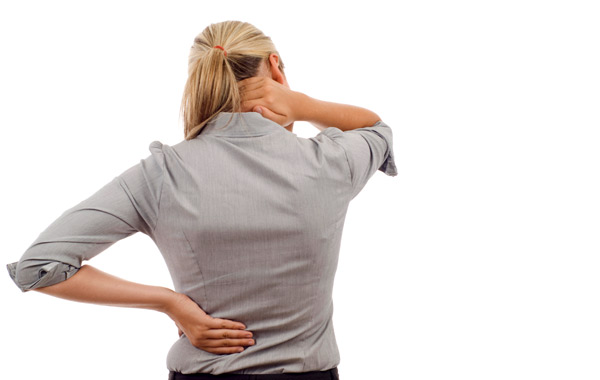
Earlier this year, Australian researchers reported that acetaminophen appeared to make no difference in helping patients manage back pain, a finding that further muddies the waters on how to help back pain sufferers.
Chris Sebelski, DPT, associate professor of physical therapy and athletic training at Saint Louis University, was not surprised to hear about the findings, as researchers have struggled to understand causes and cures for back pain for some time.
“It may be that acetaminophen helps but doesn’t completely eliminate back pain, or it may work for some people and some injuries, but not others,” Sebelski said.
While the jury is still out on how and if medication can help with back pain, Sebelski says that we need to broaden our approach to include more than Tylenol and a few days rest.
A sedentary society spells trouble.
Many people work all day at desk jobs and come home to relax in front of the TV at night. They’re locked in, working in front of the monitor for a few hours. Then they start to move and notice their muscles feel stiff and their backs ache.
“Movement is key to a healthy life, but our society is sedentary,” Sebelski says. “A lot of our jobs are repetitive and intense.
“Instead of sitting at your desk for hours, change positions, stand for 20 minutes, or go for a walk and talk to someone. Movement will keep you healthy and allow you to adjust.”
People often think they need to go for the big fix: Join a gym, do major strength training, or commit to a program. But you don’t have to make a huge time or energy commitment to reap benefits. Simply walking around and stretching during the day can relieve stress on your back.
It’s never just your back.
Focusing only on the area of your back that hurts misses the point, Sebslski says.
“It’s a myth that it’s all about the low back,” Sebelski said. “People forget that it is the center building block in your whole body. Your hips, pelvis and even feet are connected with it.”
So, to keep your body in balance and your back from aching, don’t ignore the importance of strong healthy legs, limber hips, and trunk muscles. Balanced strength in these muscle groups will keep you from overtaxing lower back muscles to compensate for weakness elsewhere in the body.
Breathe!
This one may be surprising: a focus on breathing can help avoid back aches. Breathing stimulates muscles up and down the spine. Core training, which often emphasizes breathing, focuses on strengthening groups of muscles within your trunk. One of those muscles is the transversus abdominis, a muscle many people target to build back stability. In reality, Sebelski says, it’s a respiratory muscle first, playing a key role in breathing.
“Deep breathing really activates key muscles in your trunk,” Sebelski said. “Talk. Laugh out loud. Do cardio. Do yoga. Do things that force you to breathe. This will help your back stay healthy.”
Active rest.
Finally, Sebelski suggests a change in thinking that may seem revolutionary if you think of rest as the best medicine for aching backs.
“There’s no such thing as just ‘rest,’ Sebelski said. “At rest, muscles weaken; moving builds strength. Think about it in terms of alternating movement and active rest.
“Even after an injury, while you don’t put yourself at risk by pushing yourself too hard before you’re ready, you also don’t just go to bed. You do what you can do. Even something as simple as walking offers significant benefits.” The study done by Saint Louis University Medical Center.